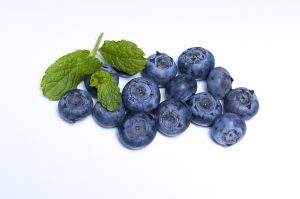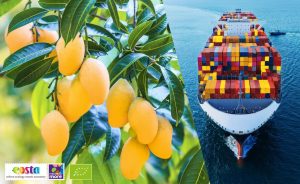Instability in the Suez Canal in trade between Eastern Africa and Europe has created important challenges for producers. It has also hindered the development of markets all along this trade route, such as Turkey and Egypt, where avocado consumption had just begun to increase, starting out from a very low base. Within this context, we interviewed Zac Bard, CEO of the WAO, in order to discover the present and future of the ‘green gold’ all over the world.
India is increasingly opening up to avocados, and the WAO has recently started a promotion campaign in this country. What are the avocado consumption figures and the forecasts for the future? What will your strategy be there?
India is one of the fastest growing avocado markets in the world. Although the base is small, growth in recent years has been surprising, with imports shooting up by an astounding 11,585% between 2014-5 and 2023-24. The current consumption of imported avocados in India is approximately 4,000 tonnes and the WAO expects a significant growth over the next few years.
The WAO’s campaign in India for 2024-25 combines strategies in the written press, along with social and digital media, with the participation of renowned Indian chefs, doctors and nutritionists. In addition, influential people from the food industry will show how avocados are cutting a path in Indian street food. The campaign’s target is to position the avocado not only as an extremely healthy ingredient, but also as a very tasty food.
The WAO is also working alongside prominent gastronomic technicians to prepare Indian recipes with avocados. Currently, many Indian restaurants use avocados, but mainly in Western recipes. The WAO believes that once avocados gain a place in conventional Indian food and in the different Indian cuisines, many new consumption opportunities will arise, boosting the demand even more. These are exciting times for avocados in India.
What are the long-term prospects for the world avocado market, and which factors will determine the sector’s growth or downturn?
I think that the future holds exciting prospects for the avocado industry. The United States, the largest market in the world, continues to grow at an incredible rate, boosted by the marketing efforts of the Hass Avocado Board and the constant supply all year long. Although the consumption is high on the West Coast, there is still potential for growth on the East Coast and in the central regions.
Mexico, Israel, and Chile lead the consumption per capita of avocados, exceeding 8 kg per person, thanks to a solid national production. This shows the potential that exists when a country adopts avocado growing. We are starting to see similar trends in Asia, where the growth is starting to take off.
Consumption per capita in Europe is currently lower than in the USA, but there is still an important growth potential. The consolidated markets continue to expand, while the new ones, such as Germany, Italy, and Eastern Europe are showing a promising development. The WAO is playing a key role in boosting this growth on the European markets.
Regarding Canada and Japan, each of which consumes around 100,000 tonnes per year, they still both have room for expansion. The Middle East has also experienced a significant growth, although it is facing up to difficulties caused by the export of immature fruit that does not ripen correctly. It is likely that an improvement in the quality of the offer should speed up the growth of the Middle Eastern market.
An important opportunity can be found in Asia, where over 60% of the world population live. Avocados have only recently become popular in many of these countries, which are experiencing a growth in wealth and in the middle class. As the number of people who travel and enjoy avocados abroad increases, those who return home wishing to eat them in their own cuisine will also rise. Although it is starting out from a small base, consumption in Asia is about to see an exponential growth, with the potential of becoming a great consumer in the future. The development of avocado crops in countries such as China, India, and Vietnam is upholding this trend even more, as national production often leads to high consumption.
Although there will be fluctuations in the size of the harvests due to phenomena such as El Niño, the general trend for avocado consumption is rising. Larger harvests in some years will help to penetrate new markets and boost the demand.
In short, although there is still room for growth on the existing markets, it is likely that the expansion predicted in Asia will change the rules of the game in the avocado sector.
How have avocado prices fluctuated in recent years and what are the prospects for the next few years? What factors influence this variation in prices?
The world demand for avocados is constantly increasing, making the prices rise all over the world. Within each season, the prices fluctuate in terms of the world volume. El Niño means that the gradual growth of the production causes seasonal peaks and troughs, but these fluctuations are managed on the market through the developing countries.
In Mexico, there are producers who are no longer renewing the certificates required for exporting to Europe owing to the high costs and the prices that are obtained for their avocados. Have you observed any changes in the import-export flow between the different world operators?
Recently, Jalisco, the second State avocado producer in Mexico, gained access to the North American market. As a result, a large part of its production now supplies the nearby American market.
In Asia, Africa is beginning to play an important role, with Kenya, Tanzania and South Africa entering the region’s market. Africa has a geographical advantage for serving the Asian markets. I foresee that this evolution will boost the growth of the Asian markets even more in the future.
What impact is climate change having on the traditional avocado cultivation regions and how are the producers adapting?
The droughts are putting pressure on some regions due to the reduction in rainfall, although a good year of rain can quickly re-establish normal conditions. Meanwhile, other regions are experiencing an increase in rainfall. As a result, the world avocado production is either coming to a standstill or decreasing in the regions most affected by climate change, while the regions that are least affected are growing fast. It is natural for the companies to migrate to regions with a competitive advantage. The farmers, including avocado producers, are facing up to worsening weather conditions due to climate change: more or less rainfall, higher maximum temperatures, lower minimum temperatures, hail, frost, etc. However, avocados have survived relatively well, compared to other crops, with production variations of only 15-20%, which is much less serious than those observed with other crops.
What innovations can be seen in the products derived from avocados and how do they influence the diversification of the market?
The production of guacamole, avocado oil, and frozen avocados (IQF) are all on the rise. Although they have been an important business in the United States for many years, they are now gaining ground in Europe and even in Asia. In spite of being a relatively small crop in world fruit production, avocados are used efficiently, as the production of oil and guacamole uses the non-saleable fruit, which guarantees a minimum waste. As the world production continues to grow along with the demand, I hope that in the future more products derived from avocados appear.






















